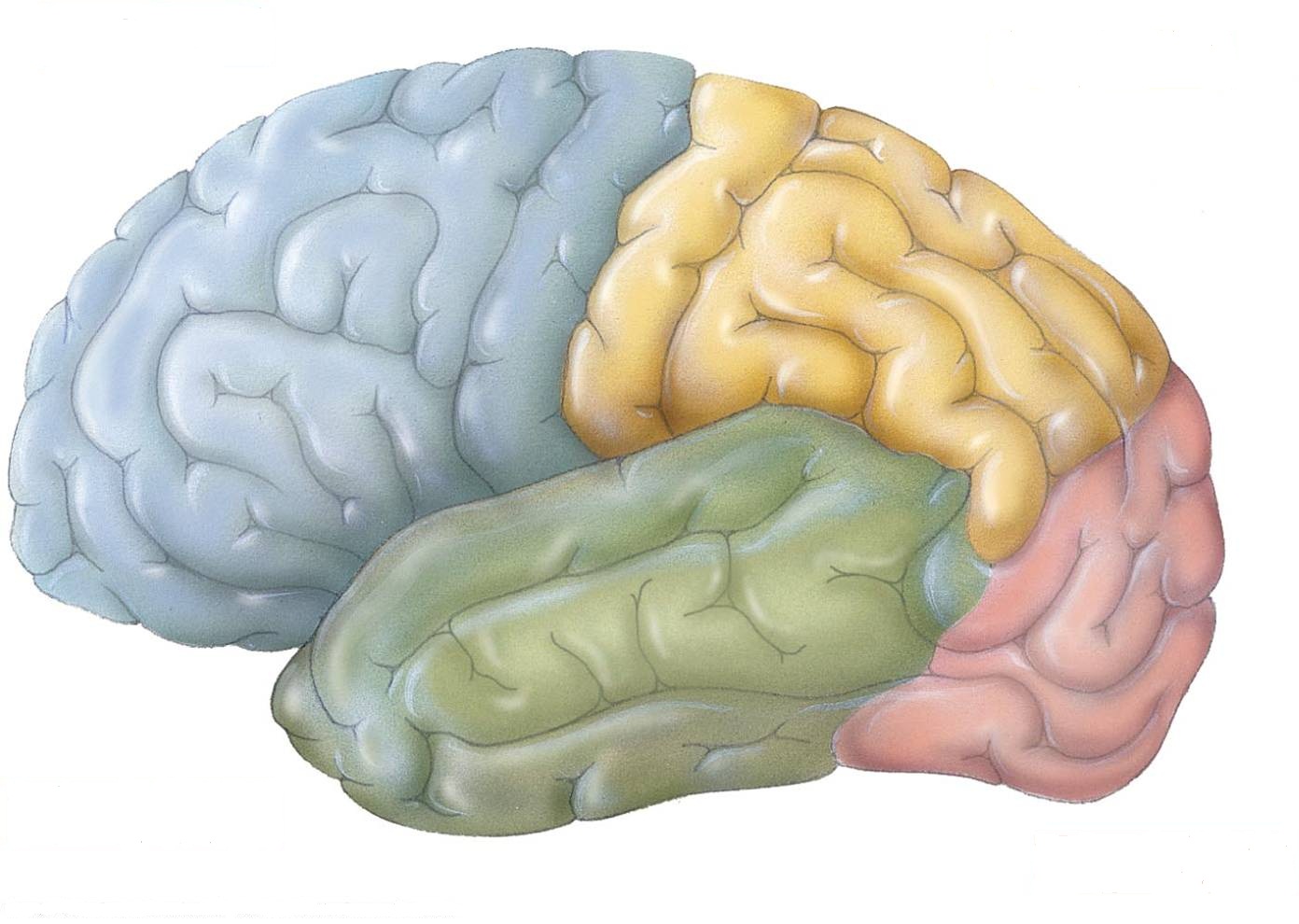Lecture 09
Brain 6
- Cerebral Cortex
- Lobes
- Areas of Specialization
- Hemispheres
- Speech Comprehension and Production Areas
- Prefrontal Cortex
- Function
- Development
- Cerebral Hemispheres
- Corpus Callosum
- Contralateral Functioning
- Hemispheric Lateralization
Overview
The cerebral cortex is the outer layer of the forebrain (cerebrum). It is highly developed in humans with numerous ridges that increase its surface area without increasing its size. It is divided into lobes, areas of specialization, and hemispheres. Each of these areas performs specific functions, although many functions occur in more than one location or structure.
The prefrontal cortex is an area directly behind the nose. It is widely-assumed to be the seat of reason, judgment, and planning, and is not fully developed until 25 years of age.
The cortex is divided into two hemispheres that exhibit contralateral functioning. Each hemisphere is specialized for performing certain functions. In mammals, the two sides are connected by a rich web of myelinated axons called the corpus callosum.
Specifics
- Visually identify the four lobes of the cortex, the three primary association areas, and Wernicke's and Broca's area.
- Describe the general functions the four lobes serve, and the specific language functions that are localized in Wernicke's area and Broca's area.
- Visually find the prefrontal cortex, and describe its role in executive functioning.
- Visually identify the corpus callosum, and describe the specific functions that are specialized in the left hemisphere and the right hemisphere.
Cerebrum Lobes
| Lobe | Location | Primary Function |
|---|---|---|
Parietal | ||
Occipital | ||
Temporal | ||
Frontal |
